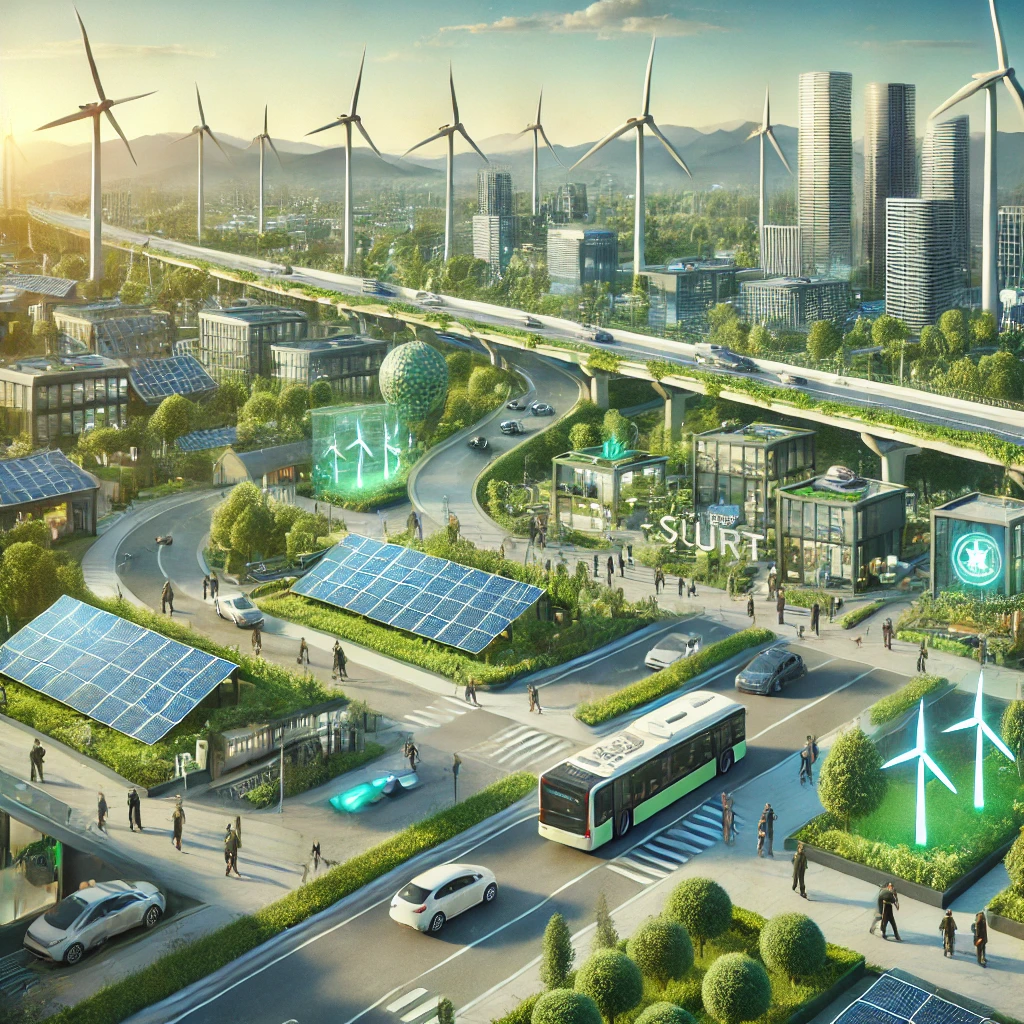
Green Tech: The Smart Solutions Leading Us Toward a Carbon-Free World
As our planet faces the ongoing threats of climate change, sustainable and green technologies are offering hope for a cleaner, greener future. From energy-efficient innovations to cutting-edge renewable energy solutions, this article dives into the world of green tech and how it can help reduce our carbon footprint. Ready to embrace the future? Let’s dive in!
1. The Importance of Green Technology in Tackling Climate Change
Green technology is no longer just a buzzword; it's the lifeline our planet needs. As climate change worsens, sustainable technologies like renewable energy systems and energy-efficient appliances are playing a vital role in reducing harmful emissions. Green tech offers solutions that go beyond simply helping the environment—it also benefits our economy and health by creating cleaner, safer, and more sustainable living conditions.
2. Renewable Energy Insights: Powering Our Future
Renewable energy is the backbone of green technology. Solar, wind, and hydroelectric power are leading the charge in providing sustainable energy sources. Solar power for homes is especially gaining traction, allowing homeowners to reduce their reliance on fossil fuels while saving on electricity bills. With advancements in energy storage, renewable energy has become more accessible and affordable than ever.
2.1 Benefits of Using Solar Energy at Home
Switching to solar energy offers a range of benefits. Not only does it reduce your electricity bill, but it also provides a sustainable energy source that reduces the carbon footprint. Solar panels can be easily installed on rooftops, and with government incentives, making the switch has never been more affordable. With the rise of solar-powered appliances, homes can become self-sufficient, reducing their dependence on the grid.
2.2 Solar Power for Homes: The Future of Residential Energy
More homeowners are choosing solar power as a primary energy source. Whether it's for heating water, generating electricity, or reducing reliance on the grid, solar power is changing how we live. Innovations in solar panel efficiency and installation have made it easier for homeowners to adopt this green technology. Imagine the freedom of powering your home without relying on nonrenewable resources!
3. Best Electric Vehicles 2025: Driving Toward a Greener Future
Electric vehicles (EVs) are a key component of green tech. They provide an eco-friendly alternative to traditional gasoline-powered cars, significantly reducing emissions and the carbon footprint. As we approach 2025, automakers are rolling out some of the best electric vehicles yet, offering longer ranges, faster charging, and affordable prices.
3.1 Best Electric Cars for an Eco-Friendly Lifestyle
If you're looking to make the switch to an electric vehicle, the options available in 2025 are incredible. Cars like the Tesla Model 3, Ford Mustang Mach-E, and Rivian R1T are leading the way. They are not only energy-efficient but also packed with innovative features that make driving more enjoyable and sustainable.
3.2 How Electric Vehicles Help Combat Climate Change
By reducing our reliance on fossil fuels, electric vehicles are significantly lowering carbon emissions. EVs are integral in achieving a carbon-free future. Whether you’re commuting to work or driving across town, every mile in an electric car reduces greenhouse gases and makes a positive impact on the environment.
4. Energy-Efficient Appliances: Small Changes, Big Impact
Energy-efficient appliances are an easy and effective way to reduce your energy consumption and contribute to a greener planet. From refrigerators to washing machines, today's appliances are designed to use less power without sacrificing performance. Making the switch can save you money on your energy bills while reducing your overall environmental impact.
4.1 How to Make Your Home More Energy-Efficient
There are many simple ways to improve your home’s energy efficiency. Start by upgrading to LED light bulbs, sealing windows and doors to prevent heat loss, and investing in energy-efficient appliances. These small changes add up over time, reducing your carbon footprint and saving you money in the process.
5. Top Green Building Techniques: Constructing the Future
Green building techniques are revolutionizing the way we design and construct buildings. Using sustainable materials, energy-efficient designs, and environmentally friendly practices, modern architecture is transforming to minimize environmental impact. These buildings are not only more energy-efficient but also create healthier living spaces.
5.1 The Role of Smart Homes in Sustainable Living
Smart homes are becoming increasingly popular, thanks to their energy-efficient technologies. Automated systems that control lighting, heating, and cooling can help homeowners significantly reduce energy consumption. These systems can even learn your habits and adjust settings for maximum efficiency, making sustainability more convenient than ever before.
5.2 Sustainable Materials and Construction Techniques
Using sustainable materials like bamboo, recycled steel, and reclaimed wood can drastically reduce the carbon footprint of a new building. Green builders are also incorporating passive design strategies, such as natural ventilation and solar orientation, to reduce the need for artificial heating and cooling. The result is buildings that are not only eco-friendly but also more durable and comfortable.
6. How to Live a Zero-Waste Lifestyle: Small Steps Toward Big Change
Living a zero-waste lifestyle is a crucial step in reducing your environmental impact. By eliminating single-use plastics and choosing sustainable products, you can help reduce the amount of waste that ends up in landfills. The journey towards zero waste may seem daunting, but with small changes like composting, reusing, and recycling, you can make a significant difference.
6.1 Simple Ways to Reduce Waste in Your Daily Life
Start by reducing the waste you generate every day. Bring reusable bags when shopping, avoid products with excessive packaging, and choose second-hand items whenever possible. You’ll be amazed at how these small changes can reduce your overall waste and help the planet.